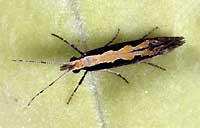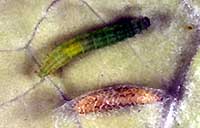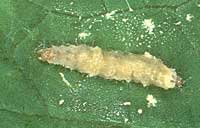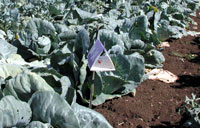| Entomology Home |

an overview
of biological control research in CSIRO Entomology
| Biological Control Home | ||
|
|
||
| Aquatic Weeds » | ||
|
|
||
|
|
||
| Biopesticides | ||
| Entomology Home | ||
| Biological Control Home > Biopesticides > Fungus |
Diamondback moth, Plutella xylostella
In a novel approach, the insects themselves will be used to spread the fungal spores to other DBM earlier in the season than the natural outbreaks would occur. Male moths, attracted to inoculation stations by pheromones (sex attractants), will pick up the fungal spores and then spread them through the DBM population. This 'auto-dissemination', has advantages over chemical insecticides, both in terms of environmental and economic sustainability and avoidance of resistance problems. This is particularly important because of the advantages that 'clean and green' produce confers upon our export and domestic markets. The research is being done in collaboration with researchers in several European Union nations, Cuba and Mexico.
Supported by: Australian Government's Backing Australia's Ability Innovation Access Programme
|




